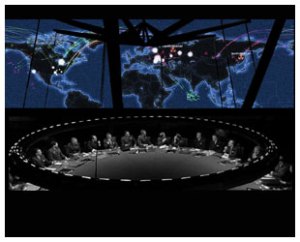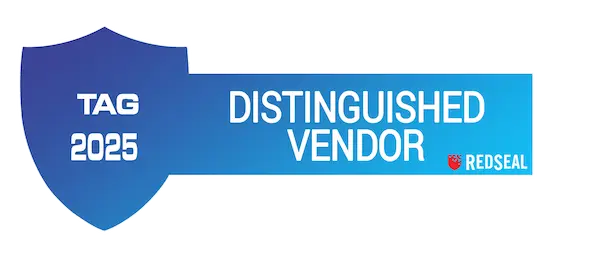We’re Living in Mud Huts
In the modern world, we depend on so many standards to protect us in our everyday lives – without even realizing it. For example, when we walk into a building we expect it will not fall down, even in an earthquake. But before we walk in, we don’t demand to see the drawings, the engineering, or the credentials of the builder and inspectors. We don’t even want to see the final certificate of occupancy: we just assume that the building has been constructed according to good, complete standards.
Regrettably, the networking world is not quite to this standard of design and implementation. Yet, today we completely depend on the networks for business and assume that they are generally well architected, built well, and up to whatever standards of protection and compliance there are. However, we continually read warnings about doing banking online on a public WiFi network, or change our passwords because people can steal them from company directories, and so on. Yikes!
 You see, networks have been built by so many people over decades, largely without standards for design, inspection and operation, and have grown so large and complex, that basically it’s as if we were living in mud huts from 2000 BC. Is that any way to conduct your critical business? In a mud hut, that is easily brought down, vulnerable to natural and man-made disasters, and not very comforting on the security front?
You see, networks have been built by so many people over decades, largely without standards for design, inspection and operation, and have grown so large and complex, that basically it’s as if we were living in mud huts from 2000 BC. Is that any way to conduct your critical business? In a mud hut, that is easily brought down, vulnerable to natural and man-made disasters, and not very comforting on the security front?
I wouldn’t live in a mud hut. And I doubt you would either. So, if your network is large, complex, and built by many people over a long period of time, there is a good chance that it may not be as secure as it should be for your business. Ask your CISO what standards have been used in building your network. PCI? FISMA? HIPAA? These are just a few, but they are a good start to addressing the needs of good and proper network architecture and design. But these standards have to be repeatedly checked because the network in which they are implemented changes all the time. In reality, there aren’t any great standards. And until there are, and networks are rebuilt in accordance with them, every CEO needs to understand the risk of running his business out of a mud hut.

 Every business depends on its networks, and we have every indication that dependency is increasing at a dramatic pace. These networks and the technology that makes them run are constantly changing. They evolve to suit the needs of business, and they are improved in performance and security by new products. Unfortunately, they are often built without a big view architecture in mind: “just make it work” is often the order of the day.
Every business depends on its networks, and we have every indication that dependency is increasing at a dramatic pace. These networks and the technology that makes them run are constantly changing. They evolve to suit the needs of business, and they are improved in performance and security by new products. Unfortunately, they are often built without a big view architecture in mind: “just make it work” is often the order of the day. It is embarrassingly common for us to find the majority of network management information in spreadsheets. Lists of devices, lists of firewall rules, hierarchies of networks. All laid out in nicely formatted tabs within multiple spreadsheet workbooks, often stored in SharePoint or Google Docs. But, always, devoid of context and the real meaning of the elements.
It is embarrassingly common for us to find the majority of network management information in spreadsheets. Lists of devices, lists of firewall rules, hierarchies of networks. All laid out in nicely formatted tabs within multiple spreadsheet workbooks, often stored in SharePoint or Google Docs. But, always, devoid of context and the real meaning of the elements. RedSeal’s model of the network will allow for faster artifact development and the development of these artifacts BEFORE deployment. The RedSeal platform has the capability to combine any components of the model (hosts, devices, subnets, etc.) into logical groups. These are referred to as zones (sometimes also called segments or enclaves). Because RedSeal understands all the access in the network, the platform is capable of presenting and measuring all access into and out of the zone and between all other zones or the network at large. It is also possible to write business or policy decisions against those access paths and track those decisions for compliance purposes. This RedSeal use case will assist JRSS and JIE with meeting or exceeding the Department of Defense Ports, Protocols, and Services Management (PPSM) guidelines. These guidelines will be applied to the Joint Regional Security Stack (JRSS) and the components that comprise the stack.
RedSeal’s model of the network will allow for faster artifact development and the development of these artifacts BEFORE deployment. The RedSeal platform has the capability to combine any components of the model (hosts, devices, subnets, etc.) into logical groups. These are referred to as zones (sometimes also called segments or enclaves). Because RedSeal understands all the access in the network, the platform is capable of presenting and measuring all access into and out of the zone and between all other zones or the network at large. It is also possible to write business or policy decisions against those access paths and track those decisions for compliance purposes. This RedSeal use case will assist JRSS and JIE with meeting or exceeding the Department of Defense Ports, Protocols, and Services Management (PPSM) guidelines. These guidelines will be applied to the Joint Regional Security Stack (JRSS) and the components that comprise the stack.
 The RedSeal model can be leveraged to not only identify these redundancies visually, but to also identify the efficacy of these controls by measuring access across and through the entire network. Investigating one segment of the network and the control mechanisms related to the segment is not sufficient. The network must be measured as a whole operating entity or system to effectively identify all possible access and points of control. Through these means, RedSeal will be providing another unique benefit to JRSS and enhancing the preparedness for JIE.
The RedSeal model can be leveraged to not only identify these redundancies visually, but to also identify the efficacy of these controls by measuring access across and through the entire network. Investigating one segment of the network and the control mechanisms related to the segment is not sufficient. The network must be measured as a whole operating entity or system to effectively identify all possible access and points of control. Through these means, RedSeal will be providing another unique benefit to JRSS and enhancing the preparedness for JIE. RedSeal Networks can provide this unique perspective by aggregating the configurations of core components that comprise the network, more specifically routers, firewalls, load balancers and switches. The RedSeal platform then analyzes these configurations and creates a model of the network. This is a visual representation of the network itself, but it is also a full model of all possible access based on the devices and the configurations of those devices. This model is a critical first step in understanding the DoD infrastructure today and will be the foundation upon which RedSeal will continue to provide unique data for the success of JRSS and JIE.
RedSeal Networks can provide this unique perspective by aggregating the configurations of core components that comprise the network, more specifically routers, firewalls, load balancers and switches. The RedSeal platform then analyzes these configurations and creates a model of the network. This is a visual representation of the network itself, but it is also a full model of all possible access based on the devices and the configurations of those devices. This model is a critical first step in understanding the DoD infrastructure today and will be the foundation upon which RedSeal will continue to provide unique data for the success of JRSS and JIE. RedSeal Networks is playing a key part in the security component of the JIE program. Part of the JIE program is to migrate to a Single Security Architecture (SSA). The deployment of this SSA will be realized through what is commonly referred to as Joint Regional Security Stacks (JRSS). Within these stacks are integrated technology components that will provide comprehensive security to the JIE environment. The development and deployment of JRSS along with the overall JIE program will take a significant effort of consolidation and migration to realize the financial and organizational benefits. RedSeal’s role in this effort is recognized through four key use cases of the RedSeal Networks platform.
RedSeal Networks is playing a key part in the security component of the JIE program. Part of the JIE program is to migrate to a Single Security Architecture (SSA). The deployment of this SSA will be realized through what is commonly referred to as Joint Regional Security Stacks (JRSS). Within these stacks are integrated technology components that will provide comprehensive security to the JIE environment. The development and deployment of JRSS along with the overall JIE program will take a significant effort of consolidation and migration to realize the financial and organizational benefits. RedSeal’s role in this effort is recognized through four key use cases of the RedSeal Networks platform. Of course I can’t speak for every board of directors, but a couple of companies on whose boards I serve have a line item on the agenda – usually during the audit committee report – to discuss cyber. Regrettably, the discussion usually lasts less than five minutes even though the headlines in the newspaper are full of corporate issues around being breached. I can’t tell if it is a lack of appreciation of how serious the problem is, or if there is even a real problem. I can’t tell if it is one of those “if I don’t ask, then I don’t have to know” problems. Solving any problem first requires acknowledgement of the problem. And the cyber attack problem is getting top billing in the news, just not in the board room.
Of course I can’t speak for every board of directors, but a couple of companies on whose boards I serve have a line item on the agenda – usually during the audit committee report – to discuss cyber. Regrettably, the discussion usually lasts less than five minutes even though the headlines in the newspaper are full of corporate issues around being breached. I can’t tell if it is a lack of appreciation of how serious the problem is, or if there is even a real problem. I can’t tell if it is one of those “if I don’t ask, then I don’t have to know” problems. Solving any problem first requires acknowledgement of the problem. And the cyber attack problem is getting top billing in the news, just not in the board room.